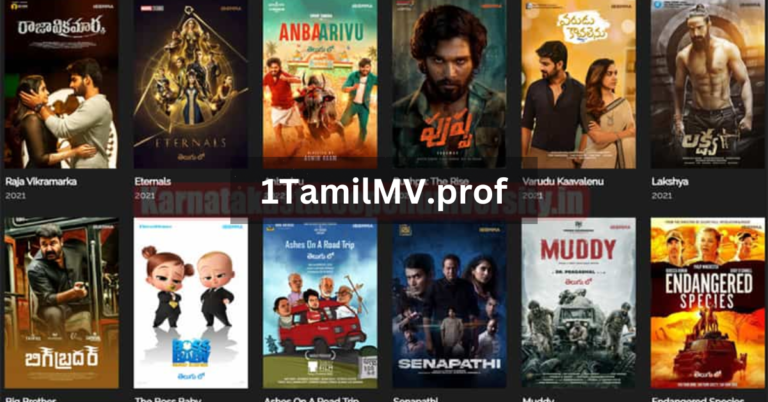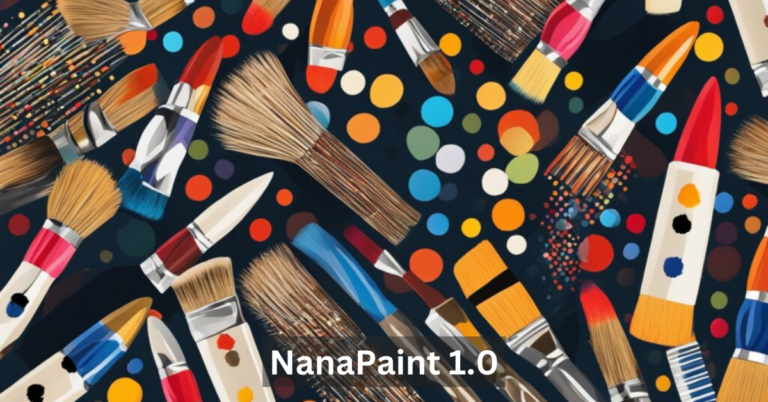Joke That Sparks Other Jokes: The Art of Shared Humor
Humor has always been an integral part of human interaction, serving as a vital tool for bonding, relaxation, and communication. In the realm of media and journalism, humor often takes center stage, especially in columns that highlight the lighter side of life. A remarkable example of this is the phenomenon of a “joke that sparks other jokes.” This concept reflects the power of a single joke to ignite a cascade of wit and laughter, engaging readers and fostering community through shared comedic creativity.
In this article, we will explore the mechanics behind jokes that inspire comedic responses, the significance of humor in communication, and how these jokes manifest in various media, particularly through platforms like The New York Times. We will also provide practical tips for crafting your own jokes that can resonate with a broad audience and encourage a vibrant joke exchange.
At its core, a joke that sparks other jokes is a piece of humor that generates a chain reaction of comedic responses. When a well-crafted joke is shared, it often inspires others to contribute their own variations or related jokes, resulting in a collaborative comedic experience. This dynamic not only highlights the communal aspect of humor but also encourages creativity among both amateur and professional comedians.
One of the essential aspects of a joke that sparks other jokes is its relatability. Jokes that connect with a broad audience, whether through cultural references or universal themes, have a higher likelihood of inspiring others to build upon them. In a world increasingly connected through social media platforms like Twitter and Facebook, the potential for these jokes to spread and evolve is vast, leading to a rich tapestry of humor that transcends individual experiences.
Humor plays a critical role in communication, serving as a social lubricant that can ease tension, foster connections, and create a sense of belonging. The ability to share a laugh can break down barriers, allowing individuals from different backgrounds to relate to one another. In settings ranging from casual conversations to formal presentations, humor can enhance engagement and make content more relatable.
Moreover, humor often acts as a vehicle for commentary on societal issues. Comedic responses can provide a fresh perspective on current events, making complex topics more accessible. Through lighthearted humor, audiences are encouraged to reflect on their experiences, leading to shared laughter and a deeper understanding of the world around them.
The Anatomy of a Great Joke
Key Elements of a Joke That Resonates
Creating a joke that resonates with an audience involves several key elements. First and foremost, a relatable premise is crucial. Jokes that draw on shared experiences, cultural references, or everyday situations are more likely to connect with a wide audience. For instance, jokes about family dynamics or workplace scenarios often elicit laughs because they reflect common experiences.
Another important element is originality. A unique twist or perspective can set a joke apart from the myriad of others. This originality can be achieved through clever wordplay, satirical jokes, or humorous commentary that challenges conventional thinking. The more distinctive and engaging a joke is, the more likely it will inspire others to join in the comedic exchange.
Structure and Timing: Crafting Effective Punchlines
The structure and timing of a joke are also critical components in delivering an effective punchline. A well-timed joke can enhance the comedic impact, creating laugh-out-loud moments that resonate with audiences. Comedic timing involves not just the pacing of the delivery but also the strategic placement of the punchline to maximize surprise and amusement.
For example, comedians often employ techniques such as misdirection or setup and payoff to create tension before the punchline is revealed. This careful construction allows for an element of surprise, which is essential for humor. A punchline that catches the audience off guard can lead to a more significant comedic response, paving the way for others to contribute their own variations.
The Role of Humor in Media
Historical Overview of Humor in Newspapers
Humor has been a staple in print media for centuries, with newspapers and magazines providing a platform for witty jokes and humorous commentary. In earlier times, humor columns often featured lighthearted anecdotes or satirical takes on current events, offering readers a respite from the seriousness of daily news. As media evolved, humor began to play a more prominent role in engaging audiences, leading to the emergence of specialized humor publications.
Today, humor columns in newspapers like The New York Times not only entertain but also reflect on cultural and social themes. These columns provide readers with a chance to engage with humor that speaks to their experiences, making it a crucial component of modern journalism.
Spotlight on The New York Times: Pioneering Humor Columns
The New York Times has been a pioneer in incorporating humor into its editorial offerings. With humor columns that resonate with a diverse audience, the publication has created a space for witty jokes and engaging comedic commentary. Writers like David Sedaris and Tina Fey have contributed to the rich tradition of humor in The New York Times, blending personal anecdotes with sharp societal observations.
These humor columns not only entertain readers but also invite them to participate in the joke exchange. By encouraging responses and variations, The New York Times fosters a sense of community among its readers, highlighting the importance of shared laughter in the modern media landscape.
How a Joke Sparks a Chain Reaction
The Mechanics of Comedic Responses
The process of a joke sparking other jokes involves several key mechanics. Initially, the original joke needs to have a broad appeal or an intriguing premise that invites exploration. This could include relatable humor or clever wordplay that resonates with audiences. Once the joke is shared—be it through a humor column or social media—it can quickly spread, inviting others to respond.
Comedic responses can take various forms, from simple one-liners to elaborate variations that build on the original premise. This diversity in responses showcases the creativity of individuals, as each person adds their unique perspective and humor to the mix. The communal nature of this exchange is what makes a joke truly special, as it transforms a solitary moment of laughter into a collective experience.
The Ripple Effect: From One Joke to Many
The ripple effect of a joke that sparks other jokes is a testament to the interconnectedness of modern communication. In the age of digital humor, a single joke can quickly reach a global audience through social media platforms and online humor communities like Reddit. This instantaneous sharing allows for rapid exchange and evolution of humor, creating a vibrant comedic landscape.
Moreover, the digital age has led to the emergence of humor trends that can capture the zeitgeist of a particular moment. Jokes about current events, cultural references, or social phenomena can quickly go viral, leading to a cascade of comedic responses that reflect the collective consciousness. This dynamic highlights the power of humor to unite people, fostering connections through shared laughter and light banter.
Case Studies: Notable Jokes That Sparked Other Jokes
Examples from The New York Times
The New York Times has featured several notable jokes that have sparked a chain reaction of comedic responses. One such example is a humorous take on a mundane situation, like the trials of online shopping. This relatable premise resonated with readers, prompting a flood of responses, variations, and shared anecdotes. Readers contributed their own humorous experiences, creating a vibrant joke exchange that illustrated the communal nature of humor.
Another instance can be found in a satirical column that played with language and societal norms, leading to a wave of witty jokes from readers. The original joke’s clever twist inspired others to respond with their interpretations, demonstrating how a single comedic moment can snowball into a larger conversation about cultural themes.
Impact of Social Media on Joke Sharing
Social media platforms have revolutionized the way jokes are shared and spread. With the ability to reach a vast audience instantly, jokes can go viral, sparking a worldwide exchange of humor. Platforms like Twitter and Facebook enable users to respond to jokes with their own variations, leading to a dynamic conversation around humor.
For example, a clever tweet may inspire countless memes and jokes, creating a chain reaction of comedic creativity. This amplification allows humor to transcend geographical and cultural boundaries, uniting people through laughter and shared experiences. The rapid exchange of jokes on social media illustrates the evolving nature of comedy in the digital age, where everyone can be a part of the comedic conversation.
Crafting Your Own Jokes That Spark Responses
Tips for Creating Relatable and Engaging Humor
Creating a joke that sparks responses requires careful consideration of your audience. Focus on crafting humor that is relatable and accessible. Jokes about everyday experiences, such as family life or workplace dynamics, are often well-received because they resonate with shared realities. By tapping into familiar themes, you can create a solid foundation for others to build upon.
Additionally, incorporating cultural references can enhance relatability. Jokes that connect with popular trends or current events are more likely to inspire engagement, as they reflect the zeitgeist of the moment. This relatability is key to sparking a joke exchange, as it encourages audiences to contribute their own variations.
The Importance of Originality and Context
While relatability is crucial, originality cannot be overlooked. A unique perspective or twist can make your joke stand out and inspire others to join in the fun. Experimenting with different comedic styles, such as absurdity or satire, can lead to fresh and engaging content that invites a response.
Context also plays a significant role in the effectiveness of a joke. A joke delivered at the right moment, whether in a casual conversation or a public setting, can resonate more deeply with the audience. Understanding the dynamics of the situation and tailoring your humor accordingly will enhance your chances of sparking a joke chain reaction.
The Impact of Digital Media on Humor
How Online Platforms Amplify Comedic Exchange
Digital media has transformed the landscape of humor, providing platforms that amplify comedic exchange like never before. Websites, blogs, and social media channels allow for immediate feedback and interaction, creating a space where jokes can flourish and evolve. For instance, platforms such as Reddit host dedicated humor communities where users share jokes, memes, and witty anecdotes. This collective engagement fosters a sense of belonging among humor enthusiasts and encourages them to share their comedic takes on various subjects.
The viral nature of digital media means that jokes can travel rapidly across the globe. A clever quip posted in a Twitter thread can reach millions in seconds, inspiring others to join in with their variations. This instantaneous exchange enhances the joke’s impact, transforming it from an isolated chuckle into a worldwide phenomenon. The accessibility of digital platforms enables everyone—regardless of their background or experience—to contribute to the humor landscape, enriching the collective comedy culture.
The Global Reach of Humor in the Digital Age
In today’s interconnected world, humor transcends borders, connecting individuals from diverse cultures. The internet has made it possible for jokes to adapt and morph, reflecting the nuances of different cultural contexts. This globalization of humor encourages cross-cultural exchanges that can lead to innovative comedic forms.
For example, memes often draw on local humor while being universally relatable. A joke about a specific cultural reference can resonate with international audiences who can see parallels in their own experiences. This ability to adapt humor for different contexts fosters a rich tapestry of comedic content that thrives on shared human experiences, highlighting our similarities while celebrating our differences.
The Psychological and Social Benefits of Humor
Building Connections Through Shared Laughter
Laughter has the remarkable ability to forge connections among individuals, creating a sense of camaraderie and belonging. When we share a joke, we not only enjoy a moment of joy but also strengthen our social bonds. Humor serves as a bridge between people, fostering relationships and encouraging open communication. This social aspect of humor is particularly evident in group settings, where shared laughter can break the ice and create a positive atmosphere.
In various contexts, from workplace environments to casual gatherings, humor plays a vital role in establishing rapport. When colleagues share a laugh over a light-hearted joke, it can enhance teamwork and collaboration. Shared laughter can help alleviate stress, making challenging situations more bearable and promoting a sense of community among participants.
The Role of Humor in Reducing Stress and Anxiety
Humor is also a powerful tool for managing stress and anxiety. In our fast-paced lives, laughter provides a necessary release, allowing us to momentarily escape from our worries. Research has shown that humor can trigger the release of endorphins, promoting a sense of well-being and alleviating tension.
By engaging with humor, individuals can develop coping mechanisms that help them navigate difficult situations. For instance, comedic commentary on challenging topics can offer fresh perspectives and lighten the emotional load. This ability to approach serious matters with a sense of humor fosters resilience, enabling individuals to face adversities with a positive outlook.
Engaging with Your Audience: Encouraging Joke Exchange
Strategies for Fostering Community through Humor
To cultivate a vibrant community around humor, it’s essential to create an environment that encourages engagement and participation. This can be achieved through interactive initiatives, such as hosting comedy nights, open mic events, or online humor contests. By providing platforms for individuals to showcase their comedic talents, you can inspire others to share their jokes and experiences.
Another effective strategy is to encourage collaboration among humorists and comedians. Collaborative projects, such as humor blogs or podcasts, allow for the exchange of ideas and creativity, ultimately leading to a more robust comedic community. By promoting connections between aspiring comedians and established humorists, you can foster a supportive network that thrives on shared laughter and creativity.
Examples of Interactive Humor Initiatives
There are numerous examples of successful interactive humor initiatives that have sparked community engagement. One notable instance is the “Joke of the Day” challenge on social media platforms, where users are invited to submit their jokes based on a daily theme. This simple yet effective strategy creates a sense of excitement and encourages participants to showcase their comedic prowess.
Another example can be found in comedy festivals like Just for Laughs, where aspiring comedians can perform alongside seasoned professionals. These events not only provide a platform for emerging talent but also foster a sense of belonging among participants, allowing them to connect through their shared passion for humor.
Conclusion
The enduring power of humor in society cannot be overstated. From its role in communication to its impact on mental well-being, humor serves as a vital tool for connection and engagement. Jokes that spark other jokes are not just a playful exchange; they reflect our shared experiences, allowing us to navigate the complexities of life with laughter.
As we continue to embrace humor in our daily interactions, we cultivate a culture that values creativity, collaboration, and joy. By encouraging the exchange of jokes and fostering an inclusive community, we can ensure that the art of humor remains a cherished aspect of our lives.
Ultimately, the joy of sharing laughter is a universal experience that transcends cultural and geographical boundaries. By participating in the rich tapestry of humor, we contribute to a collective comedy culture that celebrates our shared humanity. Whether through a clever punchline or a relatable anecdote, humor has the power to connect us all, creating a world where laughter reigns supreme.
Frequently Asked Questions
What is a joke that sparks other jokes?
A joke that sparks other jokes is a humorous statement that inspires others to share their own jokes or variations, creating a chain reaction of laughter and creativity.
How does humor contribute to communication?
Humor enhances communication by breaking down barriers, fostering connections, and making content more relatable. It can lighten serious topics and engage audiences effectively.
What role does social media play in joke sharing?
Social media platforms facilitate the rapid sharing and evolution of jokes, allowing them to reach a global audience and encouraging engagement through interactive exchanges.
How can I create jokes that resonate with others?
To create jokes that resonate, focus on relatability, originality, and timing. Draw from everyday experiences and cultural references while ensuring your punchlines are well-timed for maximum impact.
What are the psychological benefits of humor?
Humor helps reduce stress and anxiety, promotes well-being, and fosters connections through shared laughter. It can serve as a coping mechanism during challenging times.
Stay in touch to get more updates & alerts on UnFite! Thank you






